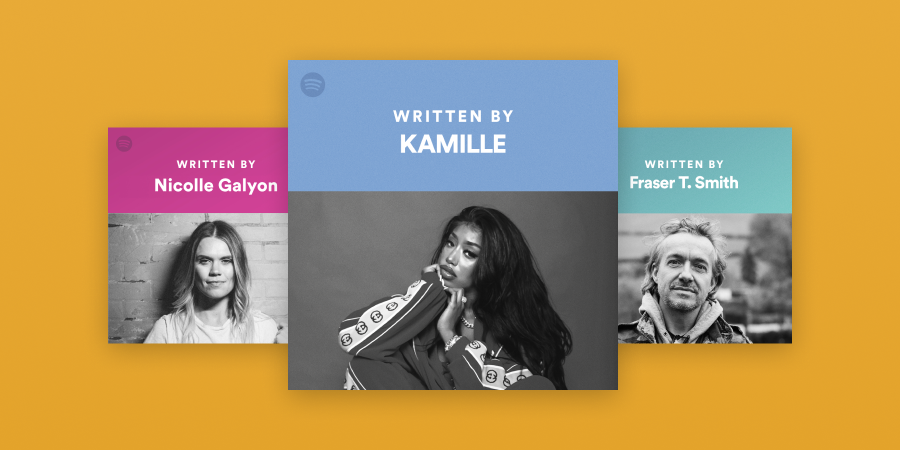What is music metadata and why is important to digital music

“The thing about metadata is this: It’s as fundamental to digital music – whether you’re making it, marketing it, or simply enjoying it – as flour is in your bread.” [cit. Spotify for artists]
What is music metadata?
Music metadata is the set of information corresponding to a song file, such as artist name, producer, writer, song title, release date and more, used to identify, sort and deliver your audio content. The more detailed the metadata is, the easiest will be the collection and distribution of the royalties generated. It also helps listeners to identify the content and its creators, and therefore improving their overall experience when using music services. But it does not end here.
This crucial information around each and every audio content distributed, delivered and released, helps digital service providers (DSPs) like Spotify, Apple Music, Amazon Music or Tidal that rely on metadata, to suggest similar artists to listeners. Metadata also helps curators to create those famous playlists everybody wants to be included in. Last but no least, accurate metadata has a key role in allocating master and publishing to right holders and related royalties payouts.
Why is it so important?
Royalties revenues come from a variety of source such as physical sales, synchronization and licensing among other sources and, of course, digital music, both downloads and streams. In the latter case, the accuracy of publishing metadata is essential to ensure creators are getting paid. If the metadata is not complete and detailed at the time of distribution by the content providers – like labels for example -, the information will not be synchronized across the whole music ecosystem and therefore all rights holders involved will not be paid correctly, in proportion, as they should.
“For this reason we shall not forget to include a great piece of the puzzle such as songwriters, copyright owners and publishers.”
Spotify’s Head of songwriter and publishing relations, Jules Parker
Just let’s make an example to put things in perspective: a song is written by an artist (not only interpreter but also songwriter of the song, otherwise we should differentiate the two roles as well), which at the time of the recording wants to feature two more artists to collaborate. The three of them are signed by different record labels and publishers. The song has a successful projection, meaning that thanks to a good marketing strategy plan of promotion, rolls on national radios, it is licensed for a synchronization for a move. In order for all the parts to be fairly paid, all need to be included in the metadata and correctly credited for their part. If any kind of information is not included, not credited, it is misspelled or does not follow the DPS’s guidelines, it can lead to insolvent payments to the rights owners involved, despite talent and efforts.
Even a focus on royalties is not the purpose of this article, just keep in mind that the decision behind royalty percentages and splits among the parties, is taken previous the distribution and release, through deals among the artist(s), managers, producers, labels, publishers and all parts involved in the supply chain. These agreements are usually taken at the early steps of the creation process and can (or cannot) interfere with the metadata included at the time of distribution.
The music industry, at all levels, still does not have one globally applicable solution yet, it is mostly left to individual collecting societies, key-players such as manager, record labels, music distribution businesses or right holders.
“We are all aware of the music industry’s metadata problem. Many collecting societies and publishers estimate that about 25 % of music publishing revenue doesn’t make it to its rightful owners due to lack of accurate metadata, and the industry is scrambling to find a viable solution. […] Agreed and transparent metadata early in the process is the only solution to a sustainable music rights management system. And the only way to get there, is to remove the music industry’s silo mentality and bring in more openness and collaboration.” said Niclas Molinder, founder of music metadata company Auddly.
In October 2019, music-metadata standards-setting organization DDEX (of which SonoSuite is a full member) launched Media Enrichment and Description (MEAD) that supports more than 30 different mechanisms for the description of parties, releases, resources such as sound recordings, and works in ways that are different from the data exchanged using DDEX’s Standard for Release Deliveries (ERNs).
It is a long-way road ahead until a common path will be found and applied at global level, but in the meantime also international streaming platforms like Apple Music or Spotify are strengthening their guidelines and getting more strict about the quality of the metadata delivered, enforcing to distribute adequate information causing otherwise content to be removed. New features like “Written by” are also implemented to bring behind the scenes creators into the spotlight with good response from labels and distributor crediting songwriters.
At local level, Claro Musica, was the first to adapt to these regulations, making the composer field mandatory on its platform in order to deliver music through them.
Just “get” the most out of it: Main reasons to include metadata
Correct music metadata is crucial to conducting a transparent music business, so let’s resume some main reasons why it is important to include correct metadata:
- Get through
As mentioned above, more and more streaming platforms or copyright laws are becoming very restrictive about content distribution. In order to avoid any copyright infringements or rejection from the DSPs follow their guidelines and place correctly all metadata required.
- Get discovered
Curated playlist of all streaming platforms are the most-wanted nowadays, especially for promotional purposes. Getting the chance to get into a playlist is not obvious nor easy. Including genre or moods into your content metadata will help curators worldwide to find new artists and songs and select them for their playlists.
- Get placed
Music supervisors for commercial and films work exactly like playlist curators. The more information is included in the metadata the easiest it will be to be found and get placed in a soundtrack or tv commercial.
- Get paid
Making sure that every key-player is credited accurately will provide correct, fair and fast royalties’ payouts to the right owners and collaborators. From artist to publishers, all parts count and need to get adequately remunerated for it.
How can you benefit including the correct music metadata during the distribution process using SonoSuite platform?
We want to ensure that all actors involved in the creation of audio content which will be digitally distributed through our platform are properly credited for the music they make and always meet all DSPs guidelines. Our Quality Control service ensures that each audio, album artwork and metadata uploaded is compliant with the DSPs content guidelines and DDEX’s standards. In this way, we help music distributors and records labels worldwide using our platform, to avoid any copyright infringement or quality issues that might affect the correct delivery of their catalog.
If you are a record label, a music distributor or aggregator and want to distribute your content catalog worldwide using SonoSuite platform, just talk to us.




